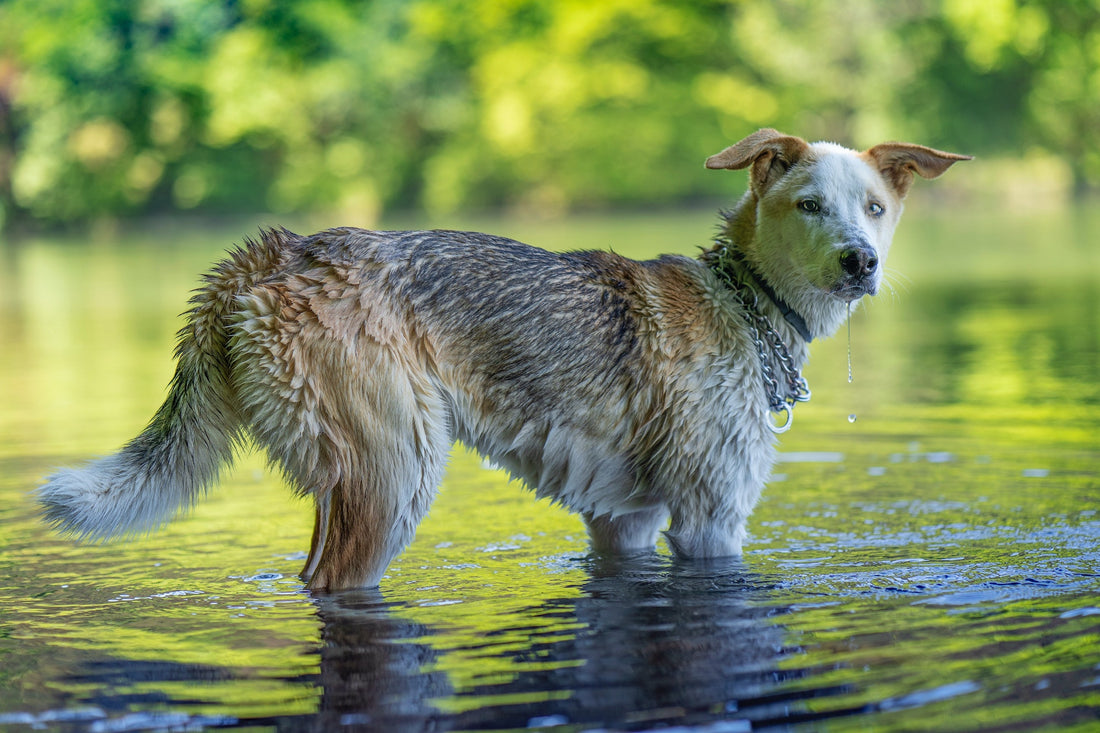During the “Dog days of summer" hot temps, combined with high humidity leads to muggy and uncomfortable air, driving many of us to seek relief in water.
But what many pet owners don’t know, is that a very serious threat exists in the water, one that can pose danger to both humans and pets, with the potential to cause severe illness, and even sudden death.
It’s called, Blue-Green Algae.
Found across the world, predominantly in fresh water, Blue-Green Algae can also occur in saltwater, and thrives when conditions are optimal.
What is Blue-Green Algae, and What Causes It?
Although referred to as Blue, or Blue-Green Algae, it is not actually a form of algae at all, but rather a bacteria made up of single cell organisms called Cyanobacteria.
These bacteria can cause a range of health issues in humans, and can be deadly for pets.
Blue-Green Algae is most prevalent at the end of summer and early fall, because it thrives in warm, stagnant, or very slow-moving bodies of water.
When the water is warm, and especially when it is “nutrient rich”, which can be elevated by fertilizer, as well as sewage runoff, conditions become optimal for Cyanobacteria, and it will quickly begin to bloom and spread.
How to Recognize Blue-Green Algae
Most people are not even aware Blue-Green Algae exists, and among those who are informed, many don’t know it can be present even when you cannot see it, hiding just below the water’s surface.

Here is what to look for to keep your dog safe:
- Foam on the top of the water
- A bad “rotting” smell
- Floating blooms that are blue, green, or even red or brown
- A layer of green “slime”
- What looks like green paint slick in the water
Symptoms of Blue-Green Algae Poisoning in Dogs
Blue-Green Algae poisoning is a very dangerous, life-threatening condition. It can occur within minutes of ingesting contaminated water, or may take several hours to present, typically after a dog is cleaning and licking their fur.
Symptoms include:
- Panting and drooling
- Difficulty breathing
- Confusion and disorientation
- Vomiting and diarrhea
- Trouble walking and stumbling
- Fatigue
- Lack of appetite
Toxicity can also present with neurological symptoms, including seizures, organ damage, liver failure, and death.
IF YOUR DOG EXHIBITS ANY OF THESE SYMPTOMS AFTER SWIMMING IN, OR INGESTING POTENTIALLY CONTAMINATED WATER, THIS IS A LIFE-THREATENING SITUATION, AND YOU NEED TO GET THEM TO A VET IMMEDIATELY.
How to Avoid Blue-Green Algae and Prevent Poisoning
It cannot be stressed enough how dangerous these bacteria can be. Sadly, many dogs lose their lives to this avoidable danger every year.

The only true way to steer clear of this deadly danger is to follow some simple rules:
- Avoid all water that has foam, including salt water
- Avoid water that smells bad
- Avoid water where scum is present
- Avoid water that looks like a green paint slick or is discolored in any way
- Avoid water at the end of summer and early fall, when temps soar, and water temps rise
MOST IMPORTANTLY, avoid all water that is slow moving or stagnant, whether or not the above conditions are present.
Remember, Blue-green algae is not always floating on top of the water, it can be just beneath the surface, and still cause the same amount of damage to people and pets.
Important Information from the CDC on Blue-Green Algae:
“You might or might not be able to see cyanobacteria blooms. They sometimes stay below the water’s surface, they sometimes float to the surface. Some cyanobacteria blooms can look like foam, scum, or mats, particularly when the wind blows them toward a shoreline. The blooms can be blue, bright green, brown, or red. Blooms sometimes look like paint floating on the water’s surface. As cyanobacteria in a bloom die, the water may smell bad, similar to rotting plants.”
To report a cyanobacteria bloom or related health event call your local or state health department (www.ndhealth.gov).
Every Sale Supports a Shelter Pet. Learn More.
Manufactured in Vermont. Learn More.
If you suspect your pet is sick, call your vet immediately. For health-related questions, always consult your veterinarian, as they have examined your pet, know the pet's health history, and can make the best recommendations for your pet.




